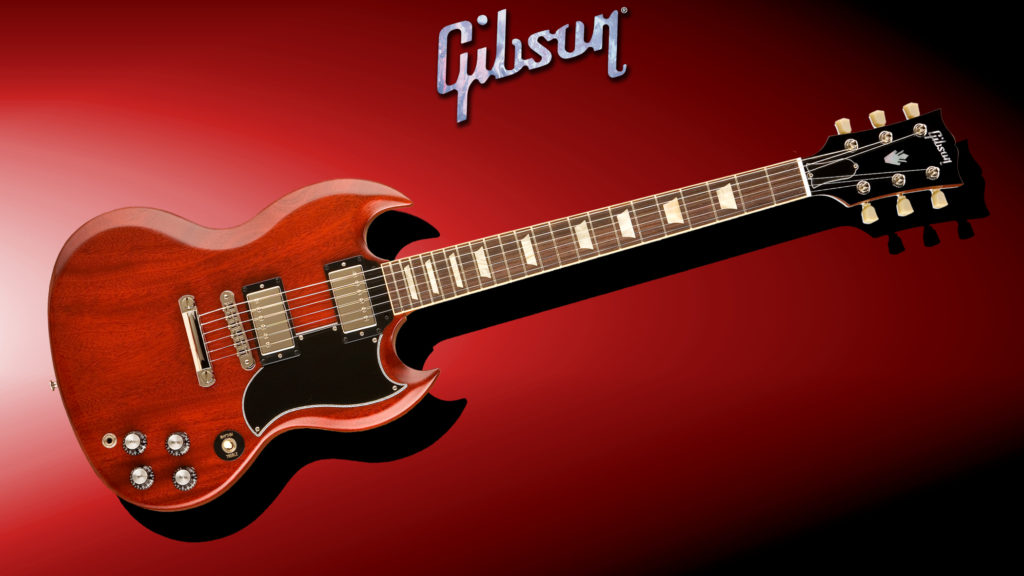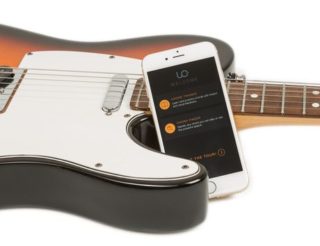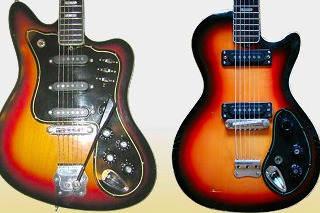10 Guitars You Need to Know #9: The Gibson SG
Author: Lucas Frost

Table of Contents
Synergy of body, mind and soul: The Gibson SG
Guitars exist in all shapes and sizes, styles and sounds, for all budgets and tastes. As I have tried to show in this series, some guitars push more towards a visual style, others more towards the sound, the price or the playability. But one element hasn’t yet been talked about: synergy.
This is an elusive and subjective quality, the ‘Ingredient X’ which finds you when you least expect. In an instrument, it involves the working-together of every element, each part supporting and embellishing the others.
Every so often a guitar comes along that just fits, an instrument which is greater than the sum total of its parts. For me, the Gibson SG is one of those.
Tony Iommi of Black Sabbath plays a Gibson SG, partly because it’s shorter scale-length of 24¾ inch allows for a low string tension. (Iommi lost the tips of his fingers in an industrial accident, forcing him to play with extra-light strings that are easier on the fingers.)
Angus Young of AC/DC was apparently drawn to the Gibson SG because of the lighter body, which also looked better on his smaller frame. Eric Clapton played it in Cream, and Carlos Santana played it at Woodstock.
They all loved the guitar’s iconic, naughty aesthetic as well as its gnarly midrange sound, and it became the guitar of the 1960s. In fact, there are plenty of reasons why this has become Gibson’s best-selling model of all time.
What’s in the name?

Supposedly an improvement on the LP, Gibson introduced the SG in 1961. The preceding decade had been difficult for Gibson as the new Fender Stratocaster was vastly outselling them. To emulate the Strat, the Gibson SG had a lighter body and double cutaway, but kept the general concept of the warm-sounding LP: mahogany and humbuckers.
Initially, the ‘New LP’ was sold under the Les Paul name – after all, the popular Jazz guitarist/inventor had been the face of Gibson’s flagship models for a decade. But when Mr. Paul objected (he found the new guitar horrendous and didn’t want to be associated with it), Gibson probably panicked and came up with a name on the spot.
And because this was a “Solid Guitar“, the name was just that: SG. Unoriginal or genius? You choose…
 Check out: 10 GUITARS YOU NEED TO KNOW #2: LES PAUL
Check out: 10 GUITARS YOU NEED TO KNOW #2: LES PAUL
Unexpected advantages
Superficially, the Gibson SG is a bit like a stripped-down Les Paul, the same chassis, electronics, scale-length, headstock and bridge. Maybe this “focus on essentials” contributed to its success, resulting in many advantages:
- Smaller body: The Gibson SG has a thin mahogany body, mainly because it omits the LPs maple top. It is comfortable to play thanks to ergonomic contouring, and becomes of course significantly lighter.
- Playability: with its extra-thin neck, the Gibson SG not only saved weight but also made it extra easy to play – it was dubbed “the fastest neck in the world”, and is still a benchmark for speed (and sometimes preferred by guitarists with small hands). Also, the double-cutaway facilitates access to the top frets, making this a popular weapon for fast, mind-bending solos that burn a hole in the stratosphere.
- Style: resembling the horns of the devil, but with Marilyn Monroe’s sexy hourglass figure, the Gibson SG’s shape embodies the schizophrenia of rock ‘n’ roll: a sensual and sweet femininity coupled with a monstrous, unholy nastiness. Which side it lets out depends on who plays it!
- Sound: made almost entirely out of mahogany, the Gibson SG really makes the most out of this excellent tonewood – balanced and warm, with a nice gnarly bite. It perfectly complements its humbucker pickups, which at the time were some of the hottest on the market. This meant they could be overdriven easily, an obvious advantage for a guitar that looks like the progeny of Betty Boop and the King of the Underworld. And like the LP, independent tone and volume dials gave the player a more nuanced control over their sound. A pretty stoned Eric Clapton tells us more about that, using the SG from his Cream days:
- Price: the altogether simpler construction made the Gibson SG significantly cheaper than its Les Paul parent. With similar options and tone to the LP, but a faster neck, devilish looks and lighter body, it is little wonder that it caught on.
The guitar’s construction had one flaw: to give full access to all 22 frets, the neck joint was rather weak and sometimes snapped off. And when it didn’t break, this weak point meant that the neck bent back and forth, producing pitch changes similar to a vibrato. Of course the guitarists of the day made full use of this cool effect. So while Hendrix was dive-bombing with his Strat, guys like Pete Townshend would grab the SG by the waist and shake it as if possessed by a psychedelic frenzy – a weird, oscillating sound.
Somehow, the Gibson SG even turned an apparent flaw into a virtue – this is synergy.
Synergy is very hard to put into words, but whatever it is, the SG has it. Its every aspect carries the same message, touching all senses in the same way: it conveys that same complex personality through its looks, feel as well as sound. And after a few years of stage use, after all the beer, sweat and blood has been rubbed deep into the fretboard, it will probably smell and taste that way too.
This is a guitar whose history, body and character, in fact its entire being, says one thing: Rock ‘n’ Roll.
Are you ready to use your gibson sg to learn some new songs? If so then we recommend you learn some basic chords and riffs that made this type of guitar so famous! You can start with summer of 69 guitar chords, these guitar strumming tips, and then the you are so beautiful to me chords.









Basically Gibson & fender I can always find a vintage sound that works with a clean tube amp of my collection there are 3 that are outside the Gibson fender Santos custom made..Epiphone Sheraton II
National dobro
Thank you for the write-up on SG’s. Wondering if owning both the LP and the SG is overkill. GAS!
Tom